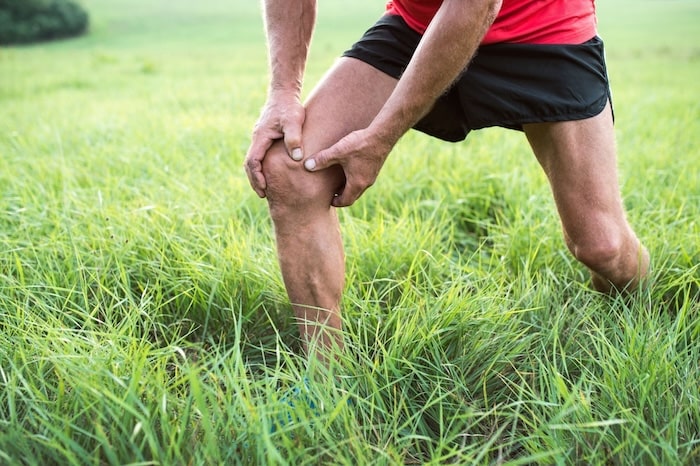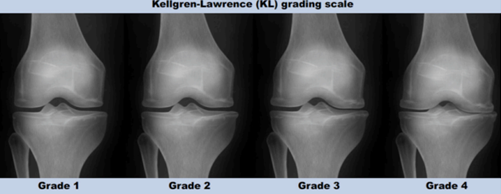Knee Arthritis Adelaide
Treatment for Knee Arthritis in Eastwood & North Adelaide
What is Knee Arthritis?
1 in 2 Australians experience knee pain as they get older. In most circumstances this is due to arthritis in the knee joint. Arthritis is where the rate of degeneration (breaking down) is greater than the rate of regeneration (repair). SA Running Injury Clinic can assist you in managing your knee arthritis.
- Do your knees can ache when trying to stay fit (walking, squatting) or at work?
- Are they stiff when you get out of bed or a chair?
- Do they feel better with a little bit of movement?
- Does it swell, grate or even give way?
- Does it swell, grate or even give way?
- Does the joint feel restricted and the knee looks big and lumpy?

How should you treat Arthritis in the Knee?
Arthritis in the knee is often a painful and crippling experience for sufferers, impacting everyday parts and decreasing mobility. It is a common misconception that knee reconstruct ions and surgery is the best solution for knee arthritis.
However, over the last couple of years, there has been an international collaboration between countries from Europe, Canada, New Zealand and Australia to determine the best and first option to combat knee arthritis and cartilage tears should be exercise therapy.
One example of intervention in treating knee arthritis is the the GLA:D Program, used widely by physiotherapists on a global scale after extensive research. Physiotherapists have found is that surgery was the last resort, and that education, exercise, and weight loss should be the first option. https://gladaustralia.com.au/faq-for-people-with-oa/ provides further information on our website regarding the GLA:D program, including what are clinic can offer and recommended physiotherapists and exercise physiology groups who partner with us at SA Running Injury Clinic to provide the best possible outcome for our patients.
These programs have been embraced by us at the SA Running Injury Clinic as the gold standard in making life easier for those with knee arthritis without the need for traumatic surgery. Our patients come out of this program significantly more educated, with less pain and not requiring surgery.
KNEE OSTEOARTHRITIS PROLOTHERAPY
What is Prolotherapy?
Prolotherapy (Proliferative Therapy) is a regenerative medicine injection that stimulates growth and repair of damaged ligaments, tendons and joints. It is a non-surgical approach to managing musculoskeletal pain and injuries by stimulating the body to heal itself.
How does Prolotherapy work?
A concentrated solution containing 12.5% - 20% glucose (dextrose) and a small amount of local anaesthetic (lignocaine) is injected into the damaged tendon/ligament/joint and results in a productive increase in inflammation in the area. This triggers a healing cascade which forms new, stronger tissue.
How to prepare for your injection:
To get the best results, please follow these steps before your appointment:
- Prior to the procedure:
- If possible, arrange for someone to drive you home, as you may feel sore or stiff after the procedure.
- Stop taking anti-inflammatory medications (e.g., ibuprofen, naproxen, diclofenac).
- Clothing:
- Wear loose, comfortable clothing or shorts to allow easy access to your knee.
- Post Procedure:
- Plan normal/ light activity after your injection. Avoid scheduling exercise, sports, or heavy lifting for the next 7 days.
What happens during the procedure:
The skin over your knee will be cleaned. A local anaesthetic is used to reduce discomfort. The prolotherapy solution is injected into specific areas around the knee joint. The procedure usually takes approximately 30 minutes.
After the Procedure
- Soreness and stiffness: It is normal to feel increased discomfort for 1-7 days after the injection as the healing process begins.
- Activity: Gentle movement and walking is encouraged, avoid strenuous activity or heavy exercise for at least 7 days.
- Pain relief: Paracetamol can be used if needed. Avoid anti-inflammatory medications (unless otherwise advised) as they may reduce the treatment effect.
- Ice or heat: Heat is preferred as it draws blood to your knee, ice reduced blood supply and discourages healing.
- Follow up: Multiple sessions are usually needed (often 3-6 sessions, spaced 4-6 weeks apart) for best results.
Expected benefits:
- Gradual reduction in knee pain
- Improved stability and function
- Potential slowing of further joint degeneration
- Better ability to perform daily activity
Please note: Improvement is typically gradual over several weeks to months. Some patients notice relief after the first few sessions, while others need more treatments for a noticeable change.
How Effective is Prolotherapy for Knee OA?
Prolotherapy vs Saline vs Exercise Therapy for Knee OA (Segel et al. 2013)
- All 3 groups improved from baseline. Prolotherapy group achieved significantly greater improvements. Knee pain also improved more in the prolotherapy group (p=0.05). No adverse events were recorded.
- Significant improvements in pain levels, stiffness, physical function, and physical component of quality of life were seen in the prolotherapy group compared to controls.
Risks or Side Effects
Prolotherapy is generally safe, but as with any injection, risks include:
- Pain, swelling, or bruising at the injection site
- Temporary increase in symptoms
- Rare risk of infection, allergic reaction, or nerve/vascular irritation
Let us know if you have any allergies, bleeding disorders, or are on blood thinners.



